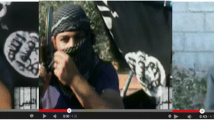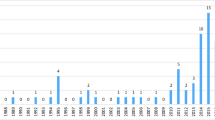Abstract
Dark networks refer to organizations that are covert and illegal in nature. Terrorist networks, organized crime groups, arms smugglers, and conspiracy organizations can all be classified as dark networks. This paper analyzes Turkey’s Ergenekon Terrorist Organization (ETO) which is a political conspiracy network that has played a significant role in the terrorist activities within the country in the last few decades. It has features of organized crime enterprises, terrorist organizations, and Gladio type clandestine armies, but it exceeds the scope of these three. This study examines the structure of the ETO using network analysis tools and court documents as the data source. Findings indicate that the network has a concentrated structure which consists of a core and periphery group of actors. The core group has a strong connectedness with each other while the density of the relationship gets lower in the periphery group. Peripheral actors are separated into subgroups which are necessary for operational purposes and also prevalent in the literature of dark networks. An efficiency-security tradeoff, which is also widely discussed in the literature, does not take place in the ETO network because the political and legal conditions of the country allow members of the network to act comfortably as opposed to being under the threat of counter-terrorism or law enforcement efforts.



Similar content being viewed by others
Notes
At this context, terrorism could be defined as violent action or threat of violence for the purpose of pursuit, gaining, and exercising power for achieving political change (Hoffman 2006).
We purposefully use ‘state’ rather than ‘government’. In Turkish ‘government’ refers to elected officials whereas ‘state’ refers the entire mechanism (mainly bureaucracy). Participants in Sancar and Umit’s (2007) study refer to mechanism not the elected officials
References
Ayling J (2009) Criminal organizations and resilience. J Int Crim Justice 37(4):182–196
Baker WR, Faulkner RR (1993) The social organization of conspiracy: illegal networks in the heavy electrical equipment industry. Am Sociol Rev 58(6):837–860
Bal I (2010) Ergenekon case in Turkey. Usak Yearbook 3:489–495
Baransu M (2010) Karargah. Karakutu, Istanbul
Berkan I (2008) Ergenekonun Yakın Tarihi. Radikal. Available via http://www.radikal.com.tr/haber.php?haberno=252081. Cited 2 July 2010
Berkan I (2011) Asker Bize İktidarı Verir mi? Everest Yayınları, İstanbul
Bianet (2008) Ultra-nationalist “Ergenekon” Convicts Indicted with High Treason. Available via http://bianet.org/english/politics/108615-ultra-nationalist-ergenekon-convicts-indicted-with-high-treason. Cited 5 September 2011
Borgatti SP (2003) The Key Player Problem. In: Carley KM, Pattison P (eds) Breiger R. Workshop Summary and Papers, National Academy of Sciences Press, Dynamic Social Network Modeling and Analysis
Borgatti SP (2006) Identifying sets of key players in a social network. Comput Math Organ Theor 12(1):21–34
Borgatti SP, Everett MG, Freeman LC (2002) Ucinet for windows: software for social network analysis. Analytic Technologies, Harvard, MA
Bovenkerk F, Yeşilgöz Y (2004) The Turkish Mafia and the State. In: Fijanut C, Paoli L (eds) Organized crime in Europe: concepts, patterns, and control policies in the European Union and beyond. Springer, Norwell, MA
Brass D, Butterfield K, Skaggs B (1998) Relationships and unethical behavior: a social network perspective. Acad Manag Rev 23(1):14–31
Carley KM (2006) Destabilization of covert networks. Comput Math Organ Theor 12:51–66
Cemal H (2010) Türkiye’nin Asker Sorunu. Dogan Kitap, Istanbul
Der Spiegel (2009) Massive Trial in Turkey Provides Look into ‘Deep State’. Available via http://www.spiegel.de/international/world/0,1518,603581,00.html. Cited 5 May 2010
Dundar C (2006) Kontrgerilla Kontratakta. Availabe via http://www.candundar.com.tr/_v3/#Did=2601. Cited 13 September 2011
Enders W, Su X (2007) Rational terrorists and optimal network structure. J Confl Resolut 51(1):33–57
Ergenekon Case (2007/1536) (Istanbul Cumhuriyet Başsavcılığı (Istanbul Head Court) 7 10, 2008)
Ericsson BH (1981) Secret societies and social structure. Social Forces 61(1):188–210
European Stability Initiative (ESI) (2008) Turkey’s Dark Side: Party Closures, Conspiracies and the Future of Democracy. ESI Briefing, Berlin - Istanbul. Available via http://www.esiweb.org/pdf/esi_document_id_104.pdf. Cited 27 August 2010
Fidel K (1970) Military organization and conspiracy in turkey. Stud Comp Int Dev (SCID) 6(2):19–43
Frei M (1995) Getting the boot: Italy’s unfinished revolution. Times Books, New York
Ganser D (2005b) Terrorism in Western Europe: an approach to NATO’s secret stay behind armies. The Whiteboard Journal of Diplomacy and International Relations. Winter-Spring
Ganser D (2005b) Terrorism in Western Europe: an approach to NATO’s secret stay behind armies. The Whiteboard Journal of Diplomacy and International Relations, Winter-Spring
Ganser D (2006) The ghost of Machiavelli: an approach to operation Gladio and terrorism in cold war Italy. Crime Law Soc Change 45(2):111–154
Gullapoglu F (1991) Tanksız Topsuz Harekat: Psikolojik Harekat? Tekin Yayinevi, Istanbul
Gunter MM (1998) Susurluk: the connection between Turkey’s intelligence community and organized crime. International Journal of Intelligence and Counterintelligence 11(2):119–141
Gursoy Y (2011) The impact of EU-driven reforms on the political autonomy of the Turkish military. S Eur Soc Polit 16(2):293–308
Hanioglu S (2008) A brief history of the late Ottoman Empire. Princeton University Press, Princeton
Hanneman RA, Riddle M (2005) Introduction to Social Network Methods. Riverside, CA: University of California Riverside (published in digital form at http://faculty.ucr.edu/~hanneman/)
Helfstein S, Wright D (2011) Covert or Convenient? Evolution of Terror Attack Networks. Journal of Conflict Resolution. March 14, 2011 0022002710393919, first published on March 14, 2011, doi:10.1177/0022002710393919
Hoffman B (2006) Inside terrorism. Columbia University Press, New York
Kalyoncu C (2008) Herkes Vazifesini Yapmış. Aksiyon. Available via http://www.aksiyon.biz/detay.php?id=29873 Cited 4 August, 2011
Kamış M (2006) Ordu ne Zaman Siyasete Karışmaya Basladı? Zaman. Available via http://www.zaman.com.tr/yazar.do?yazino=468528 Cited 30 July 2010
Kaya S (2009) The rise and decline of the Turkish “deep state”: The Ergenekon case. Insight Turkey 11(4):99–113
Kenney M (2007) From Pablo to Osama: Trafficking and Terrorist Networks, Government Bureaucracies, and Competitive Adaptation. University Park, PA. The Pennsylvania State University Press
Krebs VE (2002) Mapping network of terrorist cells. Connections 24(3):43–52
Lindelauf R, Borm P, Hamers H (2009a) The influence of secrecy on the communication structure of covert networks. Soc Network 31:126–137
Lindelauf R, Borm P, Hamers H (2009b) Understanding Terrorist Network Topologies and Their Resilience against Disruption. Discussion Paper. No. 2009-85. Tilburg University, Center for Economic Research
Mardin S (1973) Center-periphery relations: a key to Turkish politics? Daedalus 102(1):169–190
Memon N, Hicks DL, Larsen HL (2007) Understanding the structure of terrorist networks. Int J Bus Intell Data Min 2(4):401–425
Milward HB, Raab J (2006) Dark networks as organizational problems: elements of a theory. Int Publ Manag J 9(3):333–360
Morselli C (2009) Inside criminal networks. Springer, New York
Morselli C, Giguere C, Petit K (2007) The efficiency/security trade-off in criminal networks. Soc Network 29(1):143–153
NTVMSNBC (2008a) Veli Küçük Kimdir? Available via http://arsiv.ntvmsnbc.com/news/469057.asp?cp1=1 Cited 27 August 2010
NTVMSNBC (2008b) Ergenekonun Karargahı Türk Ortodoks Kilisesi. Available via http://arsiv.ntvmsnbc.com/news/433424.asp Cited 5 September 2011
Nuti L (2007) The Italian ‘stay-behind’ network-the origins of operation ‘Gladio’. J Strateg Stud 30(6):955–980
Nye RP (1977) Civil military confrontation in Turkey: The 1973 Presidential Election. Int J Middle East Stud 8(2):209–228
Open Source Center (2010) Turkey- Guide to Ergenekon. Available via http://www.fas.org/irp/world/turkey/ergenekon.pdf Cited 5 September 2011
Orlow D (1982) Political violence in pre-coup Turkey. Stud Conflict Terrorism 6(1):53–71
Parliamentary Commission for Susurluk (TBMM Susurluk Komisyon Raporu) (1997). TBMM Susurluk Komisyon Raporu (Parliamentary Commission Report for Susurluk, in Turkish) Available via http://www.kovan.ceng.metu.edu.tr/~erol/ses/susurluk/Susurluk__TBMM_Raporu.html Cited 4 September, 2011
Polat N (2011) The anti-coup trials in Turkey: what exactly is going on? Mediterr Polit 16(1):213–219
Prospect. (2009) Turkey’s Trial of the Centruy. Available via http://www.prospectmagazine.co.uk/2009/08/turkeys-trial-of-the-century/ Cited 5 May 2010
Raab J, Milward HB (2003) Dark networks as problems. J Publ Admin Res Theor 13(4):413–439
Ross JI (1993) Structural causes of oppositional political terrorism: towards a causal model. J Peace Res 30(3):317–329
Sabuktay A (2004) Locating Susurluk Affair into the Context of Legal-Political Theory: A Case of Extra Legal Activities of the Modern States. Unpublished doctoral thesis, Middle Eastern Technical University, Ankara, Turkey
Sancar M, Umit E (2007) Yargıda Algı ve Zihniyet Kalıpları. Available via http://www.tesev.org.tr/UD_OBJS/PDF/DEMP/YargidaAlgiveZihniyetKaliplariRaporu.pdf Cited 4 August, 2011
Schwartz DM, Rouselle T (2009) Using social network analysis to target criminal networks. Trends Organize Crime 12(2):188–207
Şubatlı T (2010) ‘Kıbrıs’ta cami bile yaktık’. Available via http://www.haberturk.com/gundem/haber/554417-kibrista-cami-bile-yaktik. Cited 13 September 2011
Tachau F, Heper M (1983) State, politics, and the military in Turkey. Comp Polit 16(1):17–33
The Globe and Mail (November 15, 1996) Turks investigate suspicious crash senior security official, known gangster killed in same car. Pg. A17
Today’s Zaman (2008a) Ergenekon Case: Trial of the Century Starts Today. Available via http://www.todayszaman.com/tz-web/detaylar.do?load=detay&link=156365. Cited 5 May 2010
Today’s Zaman (2008b) Ergenekon Organization Chart Mapped Out. Available via http://www.todayszaman.com/news-153889-ergenekon-organization-chart-mapped-out.html. Cited 5 September 2011
Today’s Zaman (2011) Former MİT official Eymür puts blame on former police chief Ağar for extrajudicial killings. Available via http://www.todayszaman.com/newsDetail_getNewsById.action?newsId=265093. Cited 19 December, 2011
Unver HA (2009) Turkey’s “Deep State” and the Ergenekon Conundrum. Middle East Institute Policy Brief. No. 23
Uslu E (2008) Ergenekon’s Alliance with the Eurasian Movement in Russia. Available via http://www.jamestown.org/single/?no_cache=1&tx_ttnews%5Btt_news%5D=34207. Cited 5 September, 2011
Uzer B (2011) Mehmet Eymur’un Ifadelerine Gore Devlet Adina Yapilmadik Pislik Kalmamis. Available via http://blog.milliyet.com.tr/Mehmet_Eymur_un_ifadelerine_gore_devlet_adina_yapilmadik_pislik_kalmamis_/Blog/?BlogNo=337733. Cited 19 December, 2011
Williams P (2001) Transnational Crime Networks. In: Arquilla J, Ronfeldt D (eds) Networks and NETWARS: the future of terror, crime, and militancy. RAND, Santa Monica
Xu JJ, Chen H (2005) CrimeNet explorer: A framework for criminal network knowledge discovery. ACM Trans Inf Syst 23(2):201–226
Xu JJ, Chen H (2008) The topology of dark networks. Comm ACM 51(10):58–65
Zurcher E (1998) Turkey: a modern history. I.B. Tauris & Co Ltd., New York
Acknowledgements
Authors would like to thank to Zafar Hasanov for his contributions to the data collection process.
Author information
Authors and Affiliations
Corresponding author
Appendix
Appendix
Rights and permissions
About this article
Cite this article
Demiroz, F., Kapucu, N. Anatomy of a dark network: the case of the Turkish Ergenekon terrorist organization. Trends Organ Crim 15, 271–295 (2012). https://doi.org/10.1007/s12117-012-9151-7
Published:
Issue Date:
DOI: https://doi.org/10.1007/s12117-012-9151-7




